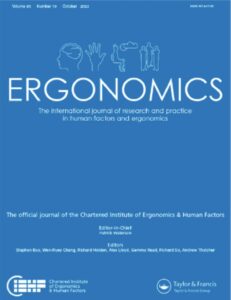Publications

Low Back Pain and Biomechanical Characteristics of Back Muscles in Firefighters
Authors: Pui W. Kong 1, Tommy Y. W. Kan 1, Roslan Abdul Ghani Bin Mohamed Jamil 1, Wei P. Teo 1, Jing W. Pan 1, Noor Hafiz Abd Halim 2, Hasan Kuddoos Abu Bakar Maricar 2, David Hostler 3
Affiliations:
- Physical Education and Sports Science Academic Group, National Institute of Education, Nanyang Technological University, Singapore
- Responder Performance Centre, Civil Defence Academy, Singapore Civil Defence Force, Singapore
- Center for Research and Education in Special Environments, Department of Exercise and Nutrition Sciences, University at Buffalo, USA
Journal: Ergonomics - July 2023 (DOI: 10.1080/00140139.2023.2236821)
-
Field & Applications:
- Medical
- Occupational Healthcare
- Musculoskeletal disorder
- Low back pain
Firefighters often experience low back pain (LBP), but their back muscle characteristics are not well studied.
This study aimed to 1) compare the biomechanical characteristics of back muscles and self-reported back disabilities in frontline firefighters with and without LBP history, and 2) examine the relationships between back disability and biomechanical measurements.
We recruited 42 male firefighters and assessed their perceived pain and disabilities, maximum isometric back extension strength, passive stiffness, and fatigability of the longissimus.
54.8% of the participants experienced LBP within the past year. Those indicating higher pain intensity also had greater disability as indicated by the Oswestry Disability Index. There were no significant differences in strength, stiffness or fatigability of the back muscles between firefighters with and without LBP history. Multiple linear regression analysis revealed no significant relationship between the back disability and any biomechanical or demographic measures, likely due to the high functional abilities of the participants.
Practitioner Summary: Approximately 50% of the firefighters who participated in the study experienced low back pain in the past 12 months. Since the pain level was mild to moderate, most of them continued to report to work. Biomechanically, there were no differences in back muscle strength, stiffness, resistance to fatigue, or left-right symmetry between firefighters with and without back pain history. Back disabilities were not related to any biomechanical measures or demographics including age and body mass index. Overall, despite experiencing some back pain, these frontline firefighters are highly functional and did not show diminished physical or neuromuscular responses.
Keywords: back extension, strength, EMG, stiffness, emergency
This study profiled the back disabilities and biomechanical characteristics of the back muscles of firefighters in Singapore. Approximately 50% of the firefighters who participated in the study have experienced LBP within the past year. Since the pain level was mostly very mild to moderate, absenteeism of work due to back pain was low. Biomechanical analyses revealed no difference in back extension strength, muscle stiffness, fatigability, or left-right symmetry between firefighters with and without LBP history. There was also no relationship between self-reported back disabilities and any biomechanical measures, which is likely related to the high functional abilities of the participants. Overall, despite experiencing some back pain, frontline firefighters in Singapore are highly functional and do not show diminished physical or neuromuscular responses.


